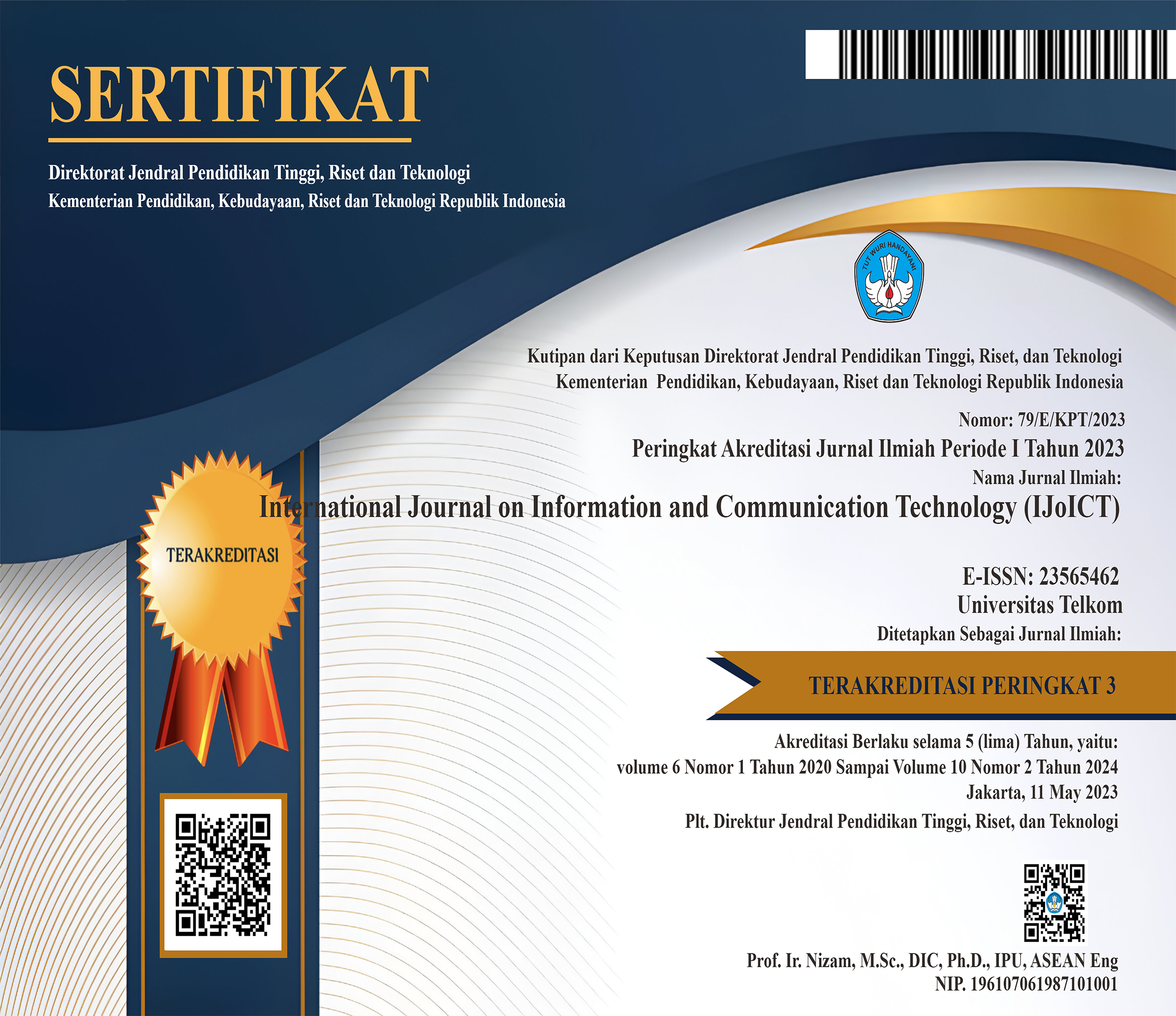Predicting Forest Fire Hotspots with Carbon Emission Insights Using Random Forest and Gradient Boosting Regression
 Abstract views: 50
,
Abstract views: 50
,
 pdf downloads: 40
pdf downloads: 40
Abstract
This research paper focuses on predicting the dispersion of carbon emissions, a crucial indicator for identifying potential forest fire hotspots in the wooded regions of Sumatra Island, Indonesia. Forest fires, often triggered by extended periods of dry weather, result in significant environmental degradation, impacting both the ecosystem and the economy. Furthermore, health concerns arise from smoke inhalation, leading to respiratory problems. To achieve this predictive capability, we harnessed valuable datasets, including GFED4.1s for carbon emissions and ERA5 for historical climate indicators, spanning from 1998 to 2022. Employing supervised learning ensemble methods, specifically Random Forest Regression (RFR) and Gradient Boosting Regression (GBR), we sought to forecast carbon emissions. It is noteworthy that our predictions encompassed carbon emission values from 1998 to 2023, providing insights into recent trends. Our analysis showed that GBR did better than RFR in terms of evaluation metrics, with a root mean square error (RMSE) of 10.87 and a mean absolute error (MAE) of 2.91. This was done by carefully tuning the hyperparameters. Additionally, our study highlighted that precipitation, temperature, and humidity were the primary climate factors influencing carbon emission values.
Downloads
References
[2] T. Tukiyat, F. H. Widodo, and R. D. Goenawan, “Disaster Risk Mitigation for Forest and Land Fire Prevention in Sumatera,” Social, Humanities, and Educational Studies (SHEs): Conference Series, vol. 3, no. 1, pp. 54–60, 2020, doi: 10.20961/shes.v3i1.44980.
[3] A. Abdo, K. M. Elzalama, and A. E. Yakoub, “A machine learning model for predicting recovery rates of COVID-19 patients,” vol. 31, no. 3, pp. 1656–1664, 2023, doi: 10.11591/ijeecs.v31.i3.pp1656-1664.
[4] Yuchen Sun; Cheng Chen; Xulei Shi; Xu Sun; Hong Fan, “Machine Learning Based Agricultural Crop Yield Estimation in Yingcheng District, Hubei Province,” in 2023 11th International Conference on Agro-Geoinformatics (Agro-Geoinformatics), Wuhan, China, 2023, pp. 1–4. doi: 10.1109/Agro-Geoinformatics59224.2023.10233541.
[5] A. Y. Hassan and M. H. Saleh, “Intelligence framework dust forecasting using regression algorithms models,” vol. 32, no. 1, pp. 177–184, 2023, doi: 10.11591/ijeecs.v32.i1.pp177-184.
[6] S. R. K, Arunkarthick A and K, “Prediction of Myositis Disease using Machine Learning Algorithm,” in 2023 5th International Conference on Inventive Research in Computing Applications (ICIRCA), 2023, pp. 534–539. doi: 10.1109/ICIRCA57980.2023.10220885.
[7] R. Meenal, P. A. Michael, D. Pamela, and E. Rajasekaran, “Weather prediction using random forest machine learning model,” Indonesian Journal of Electrical Engineering and Computer Science, vol. 22, no. 2, pp. 1208–1215, 2021, doi: 10.11591/ijeecs.v22.i2.pp1208-1215.
[8] E. A. Kadir, S. K. A. Rahim, and S. L. Rosa, “Multi-sensor system for land and forest fire detection application in Peatland Area,” Indonesian Journal of Electrical Engineering and Informatics, vol. 7, no. 4, pp. 789–799, 2019, doi: 10.11591/ijeei.v7i4.1604.
[9] E. A. Kadir, H. T. Kung, A. A. AlMansour, H. Irie, S. L. Rosa, and S. S. M. Fauzi, “Wildfire Hotspots Forecasting and Mapping for Environmental Monitoring Based on the Long Short-Term Memory Networks Deep Learning Algorithm,” Environments - MDPI, vol. 10, no. 7, 2023, doi: 10.3390/environments10070124.
[10] M. Listia Rosa, Sri and Abdul Kadir, Evizal and Syukur, Abdul and Irie, Hitoshi and Wandri, Rizky and Fikri Evizal, “Fire Hotspots Mapping and Forecasting in Indonesia Using Deep Learning Algorithm,” in 2022 3rd International Conference on Electrical Engineering and Informatics (ICon EEI), Pekanbaru, Indonesia, 2022, pp. 190–194. doi: 10.1109/IConEEI55709.2022.9972281.

This work is licensed under a Creative Commons Attribution 4.0 International License.
Manuscript submitted to IJoICT has to be an original work of the author(s), contains no element of plagiarism, and has never been published or is not being considered for publication in other journals. Author(s) shall agree to assign all copyright of published article to IJoICT. Requests related to future re-use and re-publication of major or substantial parts of the article must be consulted with the editors of IJoICT.









.png)

.jpg)




